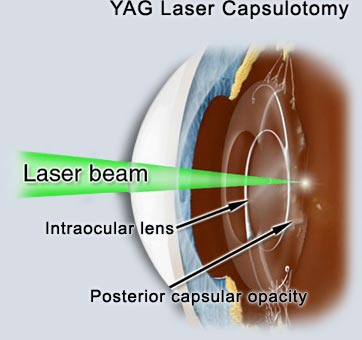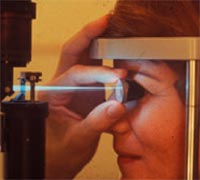A posterior capsulotomy is a non-invasive laser procedure to eliminate the cloudiness that occasionally interferes with a patient's vision after cataract surgery. In modern cataract surgery, the cataract is removed, but a thin membrane that held the cataract is left in place to hold the implanted artificial lens. Leaving the capsule in place during cataract surgery is a great advancement because it allows the vision after surgery to be more stable and ensures fewer surgical complications. However, sometimes the posterior or back portion of the capsule becomes cloudy over time. This is called posterior capsular opacification (PCO), or sometimes referred to as a “secondary cataract”. This can be resolved with an in-office laser procedure.
A posterior capsulotomy is for those who:
- have had cataract surgery
- believe that their vision is gradually getting worse
What to expect on procedure day:
Drops will be used to numb your eye; no injections or needles are used. When your eye is completely numb, you will be positioned behind the laser and the short procedure will be completed in the offices of Karlik Ophthalmology.
Your doctor will use a YAG laser to create an opening in the center of the cloudy capsule. The opening allows clear passage of the light rays and eliminates the cloudiness that was interfering with your vision.
The entire procedure usually takes less than five minutes and you can leave soon afterward. The results of the procedure are almost immediate. Most patients are able to drive home after the procedure. Your doctor may prescribe anti-inflammatory drops for you to use for a few days following the procedure. Most patients resume their normal activities immediately.

Opening the capsular bag with the laser allows for clear passage of light rays.
Realistic expectations:
Serious complications with posterior capsulotomy are extremely rare. It is a safe and effective procedure, but like any medical procedure, it does have some risks. Going to an eye specialist experienced with the procedure can significantly minimize the risks involved with posterior capsulotomy.